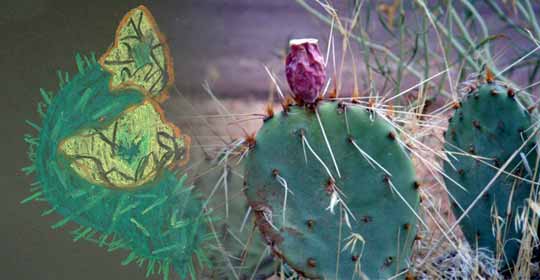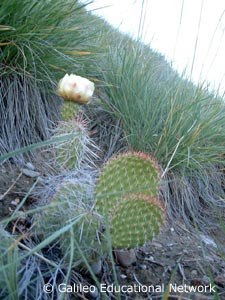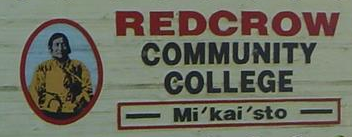Otahkoottsis – Opuntia polyacantha (Yellow Cactus)

Pastel drawing by Sommer.
Otahkoottsis
Otahkoottsis iitaisaisskssooyiiyaw otsitskitsiiyoohkotokskohpi. Matsitaihtsi;p amo ni’nsimaan pisatssaisskii. Iitawapistsiskitsiyaw tattsikahtsi mo Aapistsiskitaato’si ki Iisamssootamsstaa. Aohkottsowato’piaw kakitanistsi nahk kinakkssapo’p (Narcisse Blood) awaanii stohkanaisoka’pii omi miini. Ni’takaiksamaikowan (Pete Standing Alone) anniw mo Mo’kaatosi iitaita’pasiiyaw.
Prickly Pear Cactus

Opuntia polyacantha
Galileo Educational Network
The Prickly Pear Cactus grows in dry and gravelly soil that is south- facing. It has lots of waxy yellow flowers that are 5-7 cm across. They bloom between May and July. The plant really has no leaves and the stem is actually a flat beaver-tail shape. The stem can be eaten but Elder Narcisse Blood says that the best part is the fruit, which can be eaten fresh when peeled. The fruit is about 2.5 cm long and is yellow, orange or red. It is soft and spicy but be careful because it has large seeds. Elder Pete Standing Alone told us us that they are the sweetest near the end of September. He also told us to be careful because snakes live near Prickly Pear Cactus. Besides being a yummy treat, the fruit and stem have many vitamins.
Our elders used the needles of the Prickly Pear to help ease rheumatism. The needles were poked into the areas affected.
Corne de raquette

Opuntia polyacantha
Galileo Educational Network
La corne de raquette est un cactus qui pousse dans le sol sec et rocailleux faisant face au sud. Cette plante a beaucoup de fleurs jaunes cirées mesurant de 5 à 7 centimètres de diamètre. Elles fleurissent entre mai et juillet. Cette plante n’a pas de feuilles. Sa tige a la forme d’une queue de castor plate. Sa tige peut être mangée, mais selon l’aîné Narcisse Blood, son fruit est la meilleure partie. Il se mange frais, après avoir été pelé. Son fruit mesure environ 2,5 centimètres de long. Il est de couleur jaune, orange ou rouge. Il est à la fois doux et épicé. Il faut faire attention à ses grosses graines. L’aîné Pete Standing Alone nous a dit que ce fruit est plus sucré vers la fin septembre. Il nous a aussi dit que les serpents vivent près de ce cactus. En plus d’être bons au goût, le fruit et la tige de cette plante comptent de nombreuses vitamines. Nos aînés se servaient des aiguilles de ce cactus pour soulager le rhumatisme. Ils plantaient les aiguilles là où ils avaient de la douleur.
- Blood, N. (personal communication October 28, 2004)referred to Prickly Pear Cactus.
- Brown, Annora. (1954). Old Man’s Garden. Vancouver, British Columbia: Evergreen Press Limited.
- Kerik, Joan. (1979). Living With The Land: Use of Plants by the Native People Of Alberta. Edmonton, Alberta: Provincial Museum of Alberta.
- Standing Alone, P. (personal communication October 28, 2005)referred to Prickly Pear Cactus.
- Tilford, Gregory. (1997). Edible and Medicinal Plants Of The West. Missoula, Montana: Mountain Press Publishing Company.
- Vance, F.R., Jowsley, J.R. & Mclean, J.S. (1984). Wildflowers Across The Prairies. Saskatoon, Saskatchewan: Western Producer Prairie Books.
- Willard, Terry. (1992). Edible and Medicinal Plants of the Rocky Mountains and Neighboring Territories. Calgary, Alberta: Wildrose College of Natural Healing.





